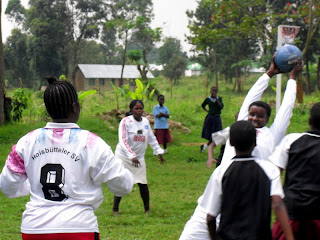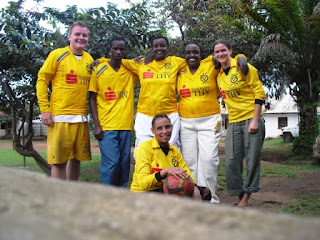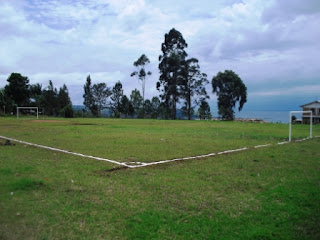"Teacher, how many cars will you take to get to America?" was the question one of my Standard 5 pupils asked me as we sat together on the school bus going to town. It was the week before I left to visit New York for the month long summer holiday beginning in June. I thought for a moment answering "Well, I will have to take the bus to Kampala in Uganda, and then a taxi from Kampala to the airport. From there I will take an airplane to Europe, and then another airplane to New York City." She looked at me astonished.
After digesting this information, she asked "And how will you get from the airport to your house?" This question, so innocent, made me stop in my tracks. How do you explain the huge differences between our countries? How do you explain the subway to a child in a country where trains are barely used, and where the thought of something underground would, for some, seem like you were closer to hell.
Finally I answered "I will take something called a subway, which is kind of like a train. The difference is that this train runs under the ground." Still puzzled she asked, "How does it run under the ground? Are there roads?"
"We dig tunnels, or holes underground that go exactly where a road would go above ground. And the trains travel in these holes", I answered .
"But teacher, how do you get down to the trains?" she asked. (Most Tanzanian houses are built on one level, so there are no stairs. The few that have a second floor do not have basements.)
"We use stairs. Just like we use stairs to go higher in a building, we can also use stairs to go down into the ground."
Hearing her questions, made me realize how traveling for 24hours can put you in a place so completely different from the one where you were living. I was slightly nervous to return. Would there be culture shock? Would I be astonished by the changes in technology? Or critical of our need to be constantly trading in a good piece of equipment for the newest model?
Despite these thoughts, it was wonderful to be home. I will not deny that I enjoyed the many creature comforts to the fullest - hot showers, an abundance of cheeses and my favorite summer fruits. As the weeks flew by, I began to wonder about going back to Tanzania again (it's amazing how quickly your mindset can change!) and whether it would be as easy to go back there as it had been to come back to New York. And once again, despite my questions and worries, it has. Both places feel like home. A wise person once said, "You don't ever lose a home, you accumulate them." Although sad to leave family and friends after a wonderful trip to the States, I am delighted to be back at KEMPS for my second semester.
 Merry Christmas from Tanzania! I hope that everyone is enjoying a cozy and festive Christmas, wherever you may be! My Charlie Brown Christmas tree is standing by my window. Most Christmas trees in Tanzania are fake, and wanting a real Christmas tree, I harvested some branches from some nearby pine trees. The long fragrant needles are adorned with Tanzania's finest colored, flashing and music-making lights. My ears are grateful that the music can be turned off!
Merry Christmas from Tanzania! I hope that everyone is enjoying a cozy and festive Christmas, wherever you may be! My Charlie Brown Christmas tree is standing by my window. Most Christmas trees in Tanzania are fake, and wanting a real Christmas tree, I harvested some branches from some nearby pine trees. The long fragrant needles are adorned with Tanzania's finest colored, flashing and music-making lights. My ears are grateful that the music can be turned off!
















































